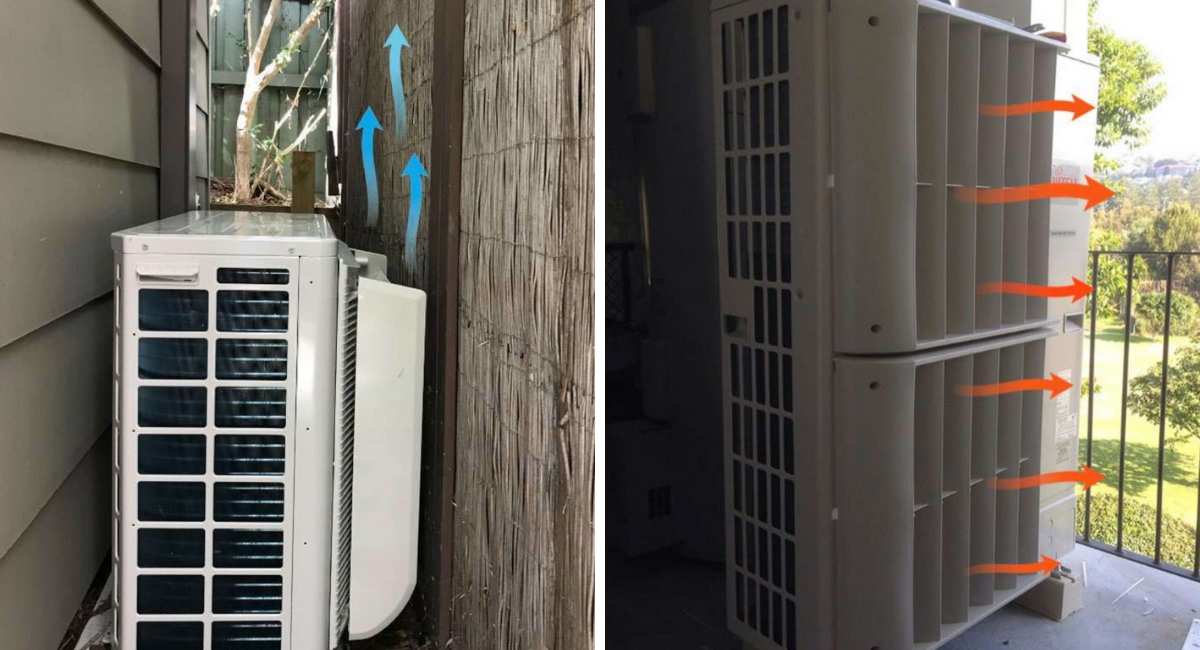As summer heat waves roll in, keeping your home cool becomes a priority. One effective way to enhance the efficiency of your window air conditioning unit is by using a DIY window air conditioner deflector. By redirecting the cold air produced by your AC, you can ensure that the cool air circulates more efficiently throughout your space, avoiding hot spots and reducing energy waste. Not only does this simple project help improve comfort, but it also contributes to energy savings and reduced electricity bills.
Creating a DIY window air conditioner deflector is an affordable and straightforward solution for homeowners looking to optimize their cooling systems. With just a few materials and some basic tools, you can craft a custom deflector that fits your window and air conditioner perfectly. Whether you're a seasoned DIY enthusiast or a beginner, this project is manageable and rewarding, leading to a more comfortable living environment.
In this article, we’ll explore the benefits of using a DIY window air conditioner deflector, provide step-by-step instructions for building your own, and answer some common questions about this innovative cooling solution. Let’s dive into the world of home improvement and see how you can make your air conditioning system work more effectively!
What is a DIY Window Air Conditioner Deflector?
A DIY window air conditioner deflector is a simple device designed to redirect the cold air produced by your window air conditioning unit. This deflector can help distribute the cool air more evenly throughout the room, preventing cold air from only hitting one area while leaving others warm. By improving airflow, the deflector can enhance comfort levels and increase the efficiency of your air conditioning system.
Why Should You Consider Making a DIY Window Air Conditioner Deflector?
There are several compelling reasons to construct a DIY window air conditioner deflector:
- Improved Air Circulation: A deflector helps direct the cold air where it is most needed, ensuring a more consistent temperature throughout the room.
- Energy Efficiency: By optimizing airflow, a deflector may reduce the workload on your air conditioner, leading to potential energy savings.
- Cost-Effective: Building your own deflector is generally cheaper than purchasing a commercial product.
- Customizable: You can tailor the design and size of the deflector to fit your specific window and air conditioning unit.
How Do You Build a DIY Window Air Conditioner Deflector?
Building a DIY window air conditioner deflector is straightforward. Here’s a brief overview of the materials and steps involved:
- Gather Materials: You will need cardboard or plywood, a ruler, a pencil, scissors or a saw, and adhesive tape or glue.
- Measure Your AC Unit: Determine the dimensions of your window air conditioning unit to create a deflector that fits snugly.
- Cut the Material: Cut the cardboard or plywood to the desired size, keeping in mind the angles that will help direct the airflow.
- Assemble the Deflector: Use tape or glue to attach the pieces together, ensuring they are sturdy enough to withstand air pressure.
- Install the Deflector: Position the deflector above your air conditioner, securing it in place with additional tape or brackets if necessary.
What are the Best Materials for a DIY Window Air Conditioner Deflector?
The choice of materials for your DIY window air conditioner deflector can greatly affect its performance and durability. Here are some options to consider:
- Cardboard: Lightweight and easy to work with, cardboard is an affordable option for a temporary deflector.
- Plywood: More durable than cardboard, plywood can provide a sturdier solution that lasts longer.
- Plastic Sheets: These are often weather-resistant and can withstand moisture, making them a good choice for outdoor use.
Can You Use a DIY Window Air Conditioner Deflector for Different Window Sizes?
Absolutely! One of the benefits of creating a DIY window air conditioner deflector is its versatility. You can design and build the deflector to fit any window size by adjusting the measurements during the construction process. Just ensure that the deflector is properly secured above the air conditioning unit to maximize its effectiveness.
Are There Any Downsides to Using a DIY Window Air Conditioner Deflector?
While there are many advantages to using a DIY window air conditioner deflector, there are also a few considerations to keep in mind:
- Initial Setup: Constructing a deflector requires some basic DIY skills and tools.
- Potential Aesthetic Concerns: Depending on your design, a DIY solution may not have the same polished appearance as a commercial product.
- Maintenance: Homemade deflectors may require regular checks and repairs to remain effective over time.
How Does a DIY Window Air Conditioner Deflector Save Energy?
A DIY window air conditioner deflector can save energy in several ways:
- Reduced Workload: By optimizing airflow, your air conditioning unit does not have to work as hard to cool the entire space.
- Better Temperature Regulation: A deflector helps maintain a more consistent temperature, reducing the need for frequent adjustments to your thermostat.
- Lower Energy Bills: With decreased energy consumption, you may notice a reduction in your monthly electricity bills.
Conclusion: Is a DIY Window Air Conditioner Deflector Worth the Effort?
In conclusion, a DIY window air conditioner deflector is a simple, cost-effective solution for enhancing the efficiency of your air conditioning unit. By redirecting cold air and improving airflow, you can create a more comfortable living environment while potentially saving on energy costs. With just a few materials and some basic DIY skills, you can tackle this project and enjoy the benefits of a well-cooled home for years to come.
When Kristen Wiig Became Harry Styles: A Unique Transformation
Delicious Surprises: I Got Banana Bread At Work Today
Exploring Creative Designs For Porches For Trailers


